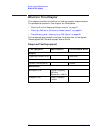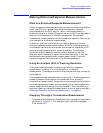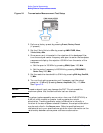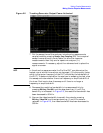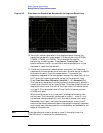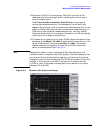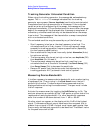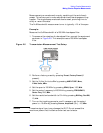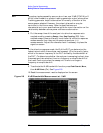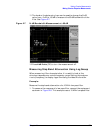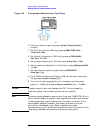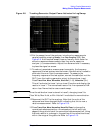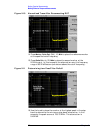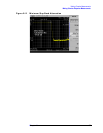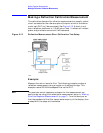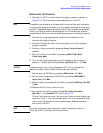
78 Chapter 2
Making Complex Measurements
Making Stimulus Response Measurements
NOTE To reduce ripples caused by source return loss, use 10 dB (E7401A) or 8
dB (all other models) or greater tracking generator output attenuation.
Tracking generator output attenuation is normally a function of the
source power selected. However, the output attenuation may be
controlled in the
Source menu. Refer to specifications and
characteristics in your specifications guide for more information on the
relationship between source power and source attenuation.
8. Put the sweep time of the analyzer into stimulus response auto
coupled mode by pressing
Sweep, then Swp Coupling (SR). Auto
coupled sweep times are usually much faster for stimulus response
measurements than they are for spectrum analyzer (SA)
measurements. Adjust the reference level if necessary to place the
signal on screen.
NOTE In the stimulus response mode, the Q of the DUT can determine the
fastest rate at which the analyzer can be swept. (Q is the quality factor,
which is the center frequency of the DUT divided by the bandwidth of
the DUT.) To determine whether the analyzer is sweeping too fast, slow
the sweep and note whether there is a frequency or amplitude shift of
the trace. Continue to slow the sweep until there is no longer a
frequency or amplitude shift.
9. To activate the N dB bandwidth function press
Peak Search, More,
then
N dB Points (On). See Figure 2-6.
10.Read the measurement results displayed on the screen.
Figure 2-6 N dB Bandwidth Measurement at –3 dB



